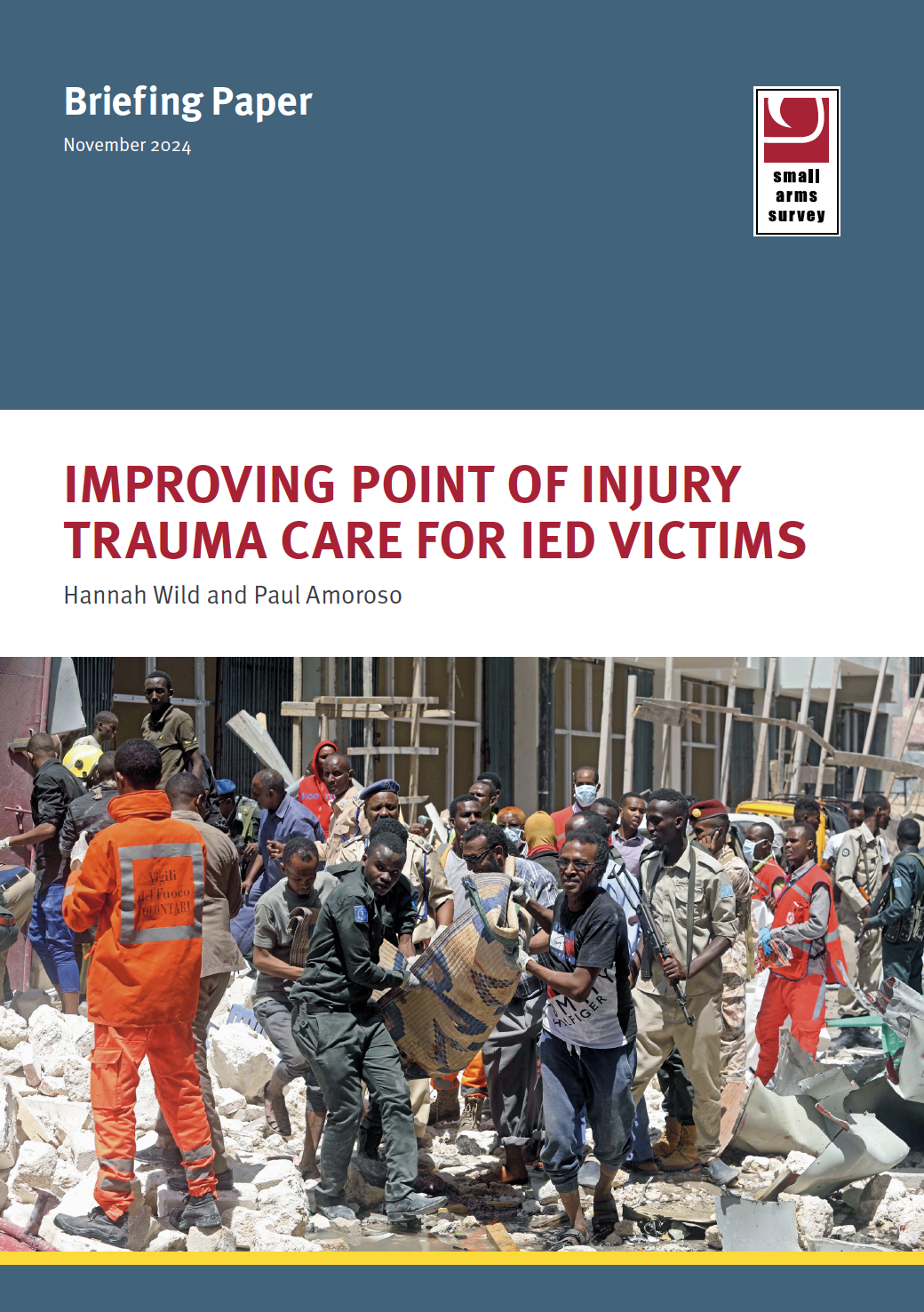
Improving Point of Injury Trauma Care for IED Victims
Improvised explosive devices (IEDs) have become a key tool in asymmetric warfare, employed in the pursuit of many objectives, including destabilization of the state and governing authorities, exertion of control and influence, and creation of fear in a population. More than 80 per cent of civilian IED casualties occur in civilian spaces, and civilians are deliberately targeted, including vulnerable groups such as children. As the proportion of civilian casualties from IEDs continues to increase and considering that an estimated 40 per cent of explosive ordnance casualties do not survive their injuries, an increased emphasis on emergency casualty care is necessary to decrease preventable death and disability among victims.
Improving Point of Injury Trauma Care for IED Victims—a new Briefing Paper from the Small Arms Survey’s Pathway to a Regional C-IED Strategy in West Africa—examines the challenges facing the inclusion of emergency care as a priority within victim assistance and counter-improvised explosive devices (C-IED) strategies, and presents the need for a comprehensive, whole-of-society approach to C-IED, which supports emergency care for civilian IED victims in low-resource settings.